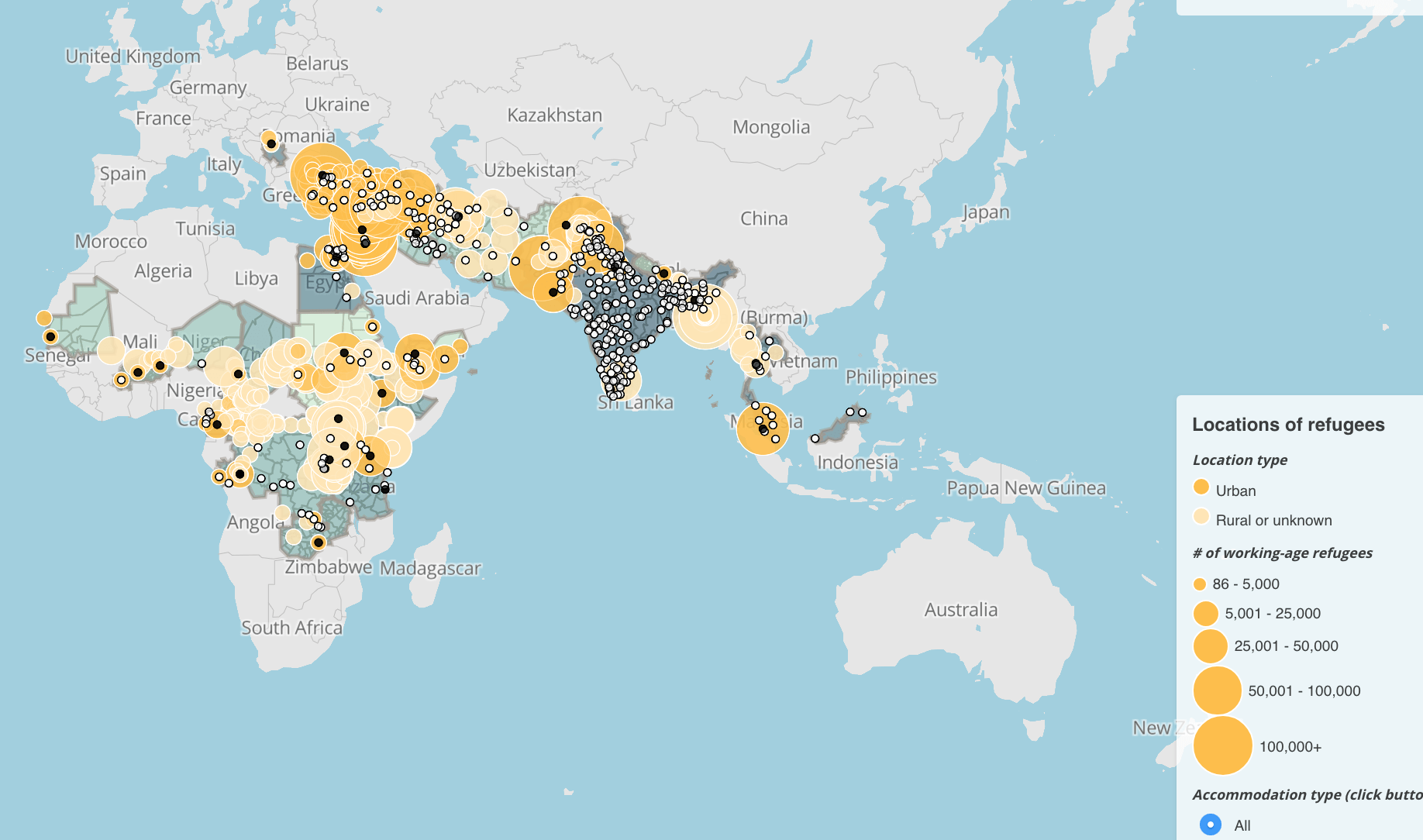Today’s map comes from the Center for Global Development (CGD) and the Tent Partnership for Refugees. It shows that as many as 2.1 million refugees of working age (18 to 59) live in major urban areas in developing countries.
According to a report the two organizations published Tuesday, this means there are substantial employment opportunities for these refugees that would also lower the cost of hosting them and create economic benefits for host countries.
The world is facing unprecedented levels of displacement due to conflicts, prolonged instability and humanitarian crises. According to the UN refugee agency, there are now more than 25 million refugees around the world in need of sustainable solutions, and about 85 percent of them are being hosted by low- and middle-income countries.
Click here for an interactive version

About 60 percent of all refugees live in urban areas, not desolate camps.
But the researchers wanted to know if those of working age live close enough to cities to take advantage of the work opportunities there with multinational, regional and local businesses. So, the researchers mapped where refugees live in 31 of the 37 developing countries that host more than 25,000 refugees.
They found that 38 percent of all working-age refugees in developing countries live in major urban areas. They estimate that’s anywhere from 915,000 to nearly 2.2 million refugees. In five to seven of the countries analyzed, there are more than 50,000 refugees in major cities.
The map also shows that many of the countries that have the most people hired by multinational corporations also have the largest clusters of working-age refugees living in urban areas.
“As market leaders with global reach through hiring and supply chains, policy influencers, and innovators, [multinational corporations] have distinctive capacities for engagement that do not exist within the traditional refugee response community,” according to the report.
“There are many barriers to employing refugees but companies should know that geography isn’t one of them,” Cindy Huang, the lead author of the study and co-director of migration, displacement, and humanitarian policy at the Center for Global Development said in a press release. “Our advice to multinational companies? Hire refugees if they can.”
However, the report notes that other major barriers may still preclude businesses from working with refugees. These include discrimination, restrictions on movement in a country and laws that prohibit refugees from working or owning businesses.
“There’s a real economic opportunity here, but only if policymakers reduce these barriers to employment and support new opportunities for refugees and host communities,” Huang said.
